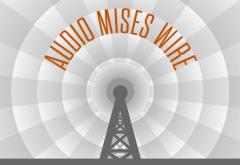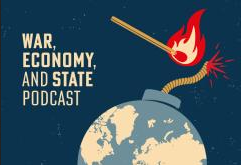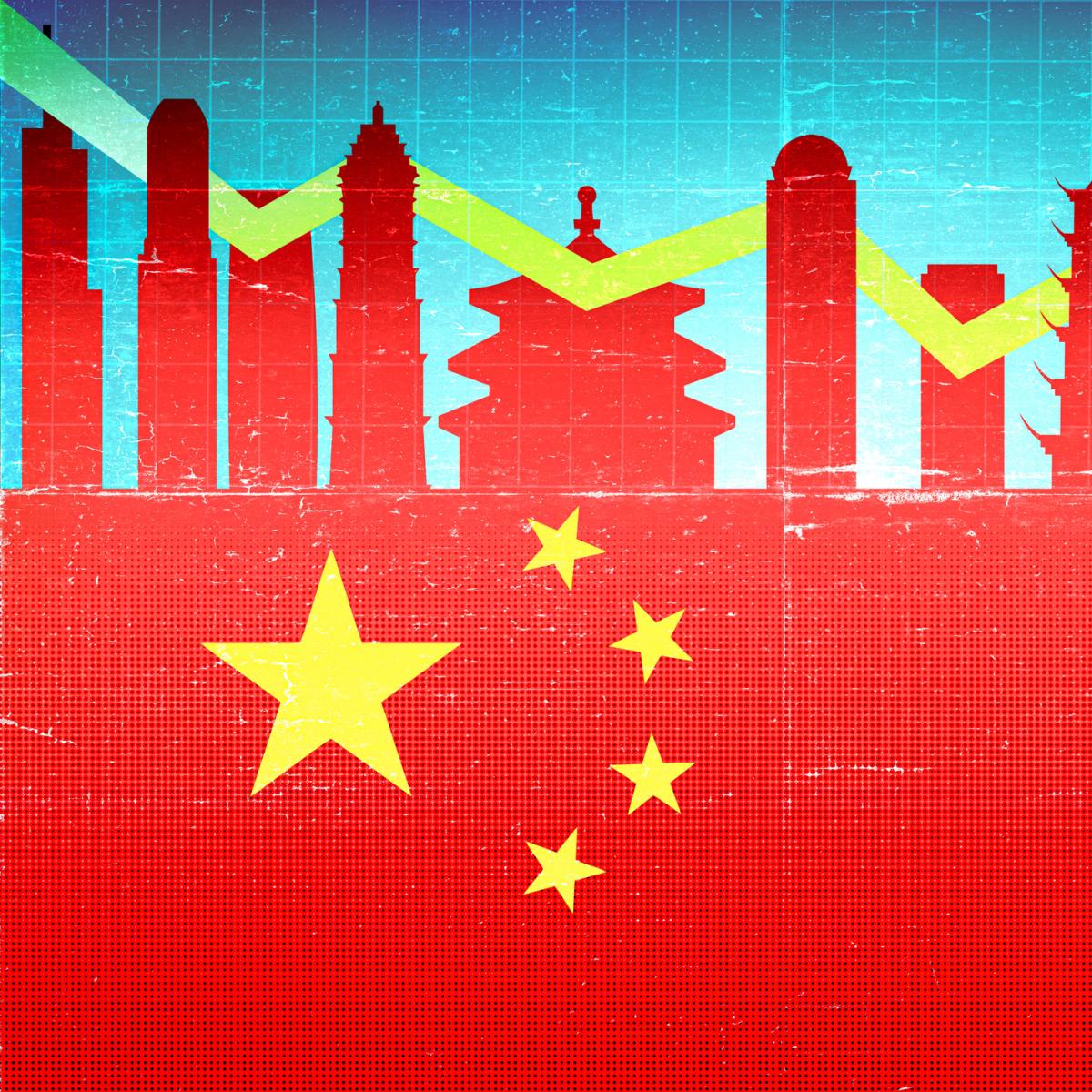Thank you very much for the invitation. I am delighted to have the opportunity to share some thoughts with you on a topic I am very much interested in and that I believe is of the utmost importance to people around the globe—and that is “the digital future of markets and money.” So let us dive right in! When I was your age, dear students, there were no cell phones, no internet, no Google, no Amazon, no Facebook, no Twitter, no TikTok, no YouTube. People did not have Apple Pay, PayPal, Alipay, or WeChat Pay. Luckily, however, we already had money. Purchases were paid for with cash—coins and bills—with writing checks and with electronic money by wiring sight deposits from one bank account to another. As online banking didn’t exist, people were pretty busy filling
Topics:
Thorsten Polleit considers the following as important: 6b) Mises.org, Featured, newsletter
This could be interesting, too:
Nachrichten Ticker - www.finanzen.ch writes Die Performance der Kryptowährungen in KW 9: Das hat sich bei Bitcoin, Ether & Co. getan
Nachrichten Ticker - www.finanzen.ch writes Wer verbirgt sich hinter der Ethereum-Technologie?
Martin Hartmann writes Eine Analyse nach den Lehren von Milton Friedman
Marc Chandler writes March 2025 Monthly
 Thank you very much for the invitation. I am delighted to have the opportunity to share some thoughts with you on a topic I am very much interested in and that I believe is of the utmost importance to people around the globe—and that is “the digital future of markets and money.”
Thank you very much for the invitation. I am delighted to have the opportunity to share some thoughts with you on a topic I am very much interested in and that I believe is of the utmost importance to people around the globe—and that is “the digital future of markets and money.”
So let us dive right in!
When I was your age, dear students, there were no cell phones, no internet, no Google, no Amazon, no Facebook, no Twitter, no TikTok, no YouTube. People did not have Apple Pay, PayPal, Alipay, or WeChat Pay.
Luckily, however, we already had money. Purchases were paid for with cash—coins and bills—with writing checks and with electronic money by wiring sight deposits from one bank account to another. As online banking didn’t exist, people were pretty busy filling out many remittance slips.
Digitalization
Times have changed a lot since then. Digitization, in particular, has been drastically developed and has brought about truly revolutionary changes over the past twenty years or so.
They come with digital transformation, i.e. the gradual transition of existing economic and social systems into the digital age, and also with digital disruption: radical changes triggered by innovative technologies and business models.
Digitization has proven to be a powerful catalyst for economic and societal change. It connects people from very different places and cultural backgrounds worldwide, bringing them closer together than ever before; it fuels competition in already established markets and drives and spreads innovations globally.
What digitization will not do, however, is change the concept of the market as such; I’m pretty sure of that. Because the concept of the market is inextricably linked to human action.
Human action means, generally speaking, that we, as human beings, replace one situation we find less satisfying with a situation we consider more favorable.
And we cannot stop doing it; we cannot not act—for logical reasons. Because if you say, “Humans can choose not to act,” then you act (namely in the form of speaking), so you commit a performative contradiction, thus saying something false.
For logical reasons, we know it is apodictically true that humans act. And as long as we do engage with our fellow human beings, there will be markets of all kinds, even in the age of digitization.
And that is very good news! Because markets—I should say: free markets—are mutually beneficial for all parties involved. Let me give you an example.
You pass a fruit shop and get hungry. You go in and buy apples for one euro. Question: What value do you assign to the apples? Answer: You value the apples more highly than the one euro—otherwise, you would not make the deal.
What about the shopkeeper? Well, he values the one euro he gets more highly than the apples he surrenders. Otherwise, he would not have partaken in the transaction.
As you can see: The free market transaction is beneficial for you and the shopkeeper. You are both better off after the deal. That is the beauty of the free market—it is mutually beneficial for all participants.
What Money Is
With new markets for goods and services in the digitized world come new demands for payment services and new requirements for certain properties of money. Take, for instance, the internet of things, pay per use, or machine-to-machine payments (M2M).
To take advantage of these innovative business opportunities, people demand programmable money.
Programmable money is often presented as money enabled by distributed ledger technology, or the blockchain system, which is indeed a prominent example that combines digital value and programmability in one single system.
The quest for programmable money has spurred efforts to tokenize commercial bank money or, most prominently, to issue digital central bank currency.
I should note in this context that markets for crypto units—such as bitcoin and ethereum, and stablecoins like tether and USD coin, to name just a few—have emerged for very different reasons.
The main motive of crypto unit advocates is the search for better money, decentralized money, money that is beyond the manipulative grip of governments and their central banks. Programmability is, so to speak, a welcome additional feature of crypto units.
But before we go into more detail about current and future monetary developments in the age of digitization, I would like to briefly talk about some fundamental and timeless insights from monetary theory.
Let me ask you: What is money? The answer is that money is the most widely accepted means of exchange. It is the most liquid, the most marketable good around.
Money is neither a consumer good nor is it a capital good. It is a good sui generis; it is a good used for exchange; it is the exchange good.
As you probably know, money is said to have three functions: means of exchange, unit of account, and store of value.
However, upon closer inspection, the Austrian economist Ludwig von Mises (1881-1973) argued that money has only one function, namely the means of exchange function. The unit of account and store of value function are merely subfunctions of the means of exchange function.
In fact, the unit of account function is only an expression of the means of exchange function: it describes the exchange ratio between the monetary units that must be surrendered to obtain the goods in question (say, one hundred US dollars for a shirt).
And the store of value function merely represents a postponement of exchange from the present into the future.
So if we agree that money has only one function, the means of exchange function, we come to a rather startling insight, namely that it does not matter how much money is in the economy.
A money supply of, for example, €15 billion is as good or as bad as a money supply of, say, €5 billion. If the quantity of money is large, goods prices will be relatively high; if it is small, goods prices will be relatively low. Again, any quantity of money is just as good or bad for financing a given transaction of goods and services as any other.
We can conclude that if money is useful only for exchange, an increase in the quantity of money will bring no social benefit. It only lowers the purchasing power of the money unit (compared to a situation in which the quantity of money in the economy had remained unchanged).
An increase in the quantity of money leads to a redistribution of income and wealth. The first recipients of the new money benefit at the expense of the late recipients.
The first recipients can spend their new money on goods and services at unchanged prices. As the money moves from hand to hand, goods prices rise, so late recipients can buy goods only at higher prices.
In other words: An increase in the quantity of money in an economy is never neutral. It creates winners (the early recipients of the new money) and losers (the late recipients of the new money).
Money for Economic Calculation
It is often overlooked or at least underappreciated that money is an indispensable tool in an advanced economy characterized by the division of labor and trade.
Money serves as a common denominator, as a numeraire for all goods prices. It thus allows for the calculation of the return on the various alternatives of economic action.
In a complex economy, only monetary calculation can allocate resources to their most productive uses—that is, uses that will satisfy consumer demand best.
Today’s modern, advanced economies could not exist without using money for economic calculation.
Of course, not every kind of money will do. What is needed is sound money, money that does not change its purchasing power all too quickly and totally unexpectedly.
I should note here that there is no such thing as stable money in the sense that the exchange ratio of money vis-à-vis tradable goods would, and could, remain constant over time.
From the logic of human action we know that man changes from moment to moment and his valuations and volitions change with him. Sometimes people value a good more highly, sometimes less highly; and new products appear on the market, replacing established products. There is no fixed point in this ceaseless fluctuation. This also applies to the “money good” in relation to all other goods and services.
Commodity Money
If we look back in history, we find that people, whenever they had the freedom to choose their money, preferred precious metals, gold and silver in particular.
The reason is obvious: to serve as money, the thing/the good in question must have certain properties: The “money item” must be scarce, durable, highly divisible, portable, storable, and have a high value per unit of weight, to name just a few qualities.
Because gold and silver are supremely “money-like” commodities, they were chosen by the free supply and demand in the market as money when they were available.
A Bit of Monetary History
Now you might ask: Why are we no longer using gold and silver as money? Let me try to provide a short answer.
By the last quarter of the nineteenth century, most countries had eventually adopted gold as a means of payment. This meant, at least in theory, that people, in their daily transactions, used gold coins and banknotes, which were redeemable into physical gold at the issuing banks.
At the beginning of World War I, however, many countries ended the gold redeemability of their currencies. Why? Well, governments wanted to finance their wartime expenditures by means of the “inflation tax,” that is, by issuing unbacked paper money. And so, they severed the link between physical gold and the currencies they printed.
The result was high inflation, in some countries, even hyperinflation (like, say, in Germany, Austria, and Hungary).
After the war ended in 1918, most nations failed to return to gold money. The big exception was the United States. Even in World War I, the US dollar had kept its gold backing.
In 1944, forty-four nations signed the Bretton Woods Agreement, which took effect after the end of World War II in 1945. The Bretton Woods system made the US dollar the world’s reserve currency. Thirty-five US dollars were equivalent to one ounce of gold.
By the way: The Bretton Woods system was not a gold standard; it was something like a pseudo- or fake gold standard. But it worked, at least initially. The reason it eventually collapsed was that the Americans didn’t play by the rules.
They kept issuing more and more US dollars that were not backed by physical gold. People worldwide lost faith in the promise that the US could redeem the greenback for gold.
As more and more nations rushed to exchange their US dollars for gold at the New York Fed, the US gold stock dwindled, and the US run the risk of defaulting on its gold payment obligations.
On August 15, 1971, US president Richard Nixon took decisive action. He announced that the US dollar would no longer be redeemable for gold.
This unilateral decision by Nixon brought the world an unbacked paper money, or fiat money, system.
Nixon’s decision actually amounted to the greatest act of monetary expropriation in modern history. And it brought us the fiat money problem that still haunts us today.
The US economist Milton Friedman put it succinctly and quite diplomatically:
“A world monetary system has emerged that has no historical precedent: a system in which every major currency in the world is … on an irredeemable paper money standard…. The ultimate consequences of this development are shrouded in uncertainty.”
The Fiat Money Problem
Today’s worldwide paper or “fiat” money regime is an economically and socially highly problematic system—with negative consequences that extend beyond what most people would imagine.
Fiat money can be characterized by three factors. (1) It money monopolized by the state and its central bank. (2) Fiat money is created through bank lending, it is created out of thin air. (3) It is dematerialized money in the form of colorful paper tickets and bits and bytes on computer hard drives.
Fiat money is by means ‘harmless’. It is inflationary—it loses its purchasing power over time.
Fiat money benefits a few at the expense of many others—so we can say that fiat money is socially unjust.
Fiat money causes boom-and-bust cycles—it sets in motion an artificial economic upswing followed by a crash.
Fiat money leads to overindebtedness—it is created through credit expansion, and the economies’ debt burden outpaces income growth.
Fiat money allows the state to become ever bigger and more powerful—at the expense of civil liberties and freedom.
These and other insights were presented by the Austrian School of Economics scholars many years ago.
Unfortunately, they hardly play a role in the efforts of most mainstream economists, central banks, politicians, or bureaucrats in identifying the root cause of the current financial and economic crisis and, against this backdrop, formulating proper remedies.
The ABCT
Let’s talk a little bit about the boom and bust cycle. How is it that the economy experiences an upswing followed by a slump? The Austrian Business Cycle Theory (ABCT) provides an answer.
In a fiat money system, the central bank and commercial banks extend loans to consumers, firms and governments, thereby creating new money. Literally speaking, this amounts to creating money out of thin air.
The new supply of credit artificially lowers the market interest rate (from the level that would prevail had there been no increase in credit that was not backed by savings).
Interest rates suppressed that way send misleading signals and encourage more consumption and investment while discouraging savings. A boom sets in. However, it entices the economy to live beyond its means and firms to make inefficient investments.
The boom cannot be sustained; it must collapse, so the theory goes, as the boom leads to distortions in the pricing and production system.
Once the new money has worked its way through the economy in terms of affecting prices and wages, the expansionary illusion of the credit and money injection evaporates, and people return to their original consumption-savings-investment ratio, which pushes the market interest rate up and turns the boom into bust.
Of course, the bust is necessary for the economy to return to a healthy growth process. However, any bust is painful, and most people don’t like it.
In an effort to fend off the bust, the central bank steps in and injects new credit and money, artificially suppressing the market interest rate once again, and the impending bust is turned into yet another boom. And so on.
This is the ABCT explanation of why there is a recurrence of boom and bust, or a boom and bust cycle, for that matter.
While boom and bust are problematic for various reasons, there is a major catch with fiat money that needs to be mentioned: it gets people—actually the entire economy—addicted, so to speak.
The Addiction
Fiat money shapes the economies’ production and employment structure. Corporate profits and jobs depend on the chronic increase in credit and money made available at ever lower interest rates; governments and their bureaucracies grow and become ever more powerful with the help of fiat money.
The longer the fiat money system exists, the stronger the vested interests in keeping the fiat money system going, and the harder it will be to put an end to it.
Eventually, a situation may arise in which protecting the fiat money regime from collapse becomes the supreme policy objective, essentially overriding all other policy issues.
Take, for instance, the ongoing bailout of the euro currency—which, like the US dollar and all other major official currencies—is a fiat currency.
Massive amounts of national debt are piled up to prevent the economy and the euro fiat money system from going over the cliff; enormous sums are channeled into financially ailing banks. These amounts are not put to productive use.
In fact, there is an inconvenient truth about fiat money, which Ludwig von Mises put succinctly:
“It would be a mistake to assume that the modern organization of exchange is bound to continue to exist. It carries within itself the germ of its own destruction; the development of the fiduciary medium must necessarily lead to its breakdown.”
Essentially, Mises is saying that fiat money (he uses the term fiduciary media) gradually destroys the free market system over time and replaces it a collectivist-socialist order.
A bleak conclusion—for we all know that socialism will not, cannot work. This is not only proven by a great deal of experience but also an undisputed insight derived from sound economic theory.
Central Bank Digital Currency
This brings me back to digitization, new markets, and innovation in payment services and money.
As I mentioned earlier, the demand for programmable digital money is one important official argument for why central banks around the world are in the process of issuing digital central bank currency.
The central banks want, first and foremost, to uphold their fiat money monopoly that way: They do not want private monies competing with central banks’ fiat currencies.
This is problematic given that there are quite a few issues with central bank digital currencies (which, I think, tend to be neglected or overlooked in the current debate).
First, central bank digital currencies are not “better monies.” They represent fiat monies. As such, fiat central bank digital currencies suffer from the same economic and ethical defects as analogue and electronic fiat monies.
Second, central bank digital currencies will most likely replace cash or allow governments to phase out coins and notes. And so, people will most likely lose their only means of making anonymous payments, and what little is left of their financial privacy will be gone.
Third, without cash you no longer can withdraw your money from the banking system. It can be expropriated through negative interest rates imposed by the central bank.
Fourth, as central bank digital currencies become increasingly accepted, they can easily be instrumentalized for further political purposes. Just think of China’s social credit system.
Imagine, if you will, only getting access to central bank digital currency if you comply with the government’s directives (or comply with the wishes of those special interest groups that determine the government’s orders).
If you don’t, you suffer disadvantages: you will no longer be able to travel, order certain newspapers and books or buy groceries; your accounts may be frozen, and your money even confiscated if you dare dissent too much with the government’s directives.
The list of such antifreedom atrocities that become a possibility in a world of central bank digital currencies goes on and on.
The Marxist Idea of a Central Bank
Perhaps this is the right moment to direct your attention to the fact that the idea of central banking—and thus central bank money, be it in analogue or in digital form—is not a capitalistic but a Marxist concept.
In his “Manifesto of the Communist Party” (1848), published together with Frederick Engels, Karl Marx calls for “measures” — by which he meant “despotic encroachments on property rights”—which would be “inevitable as means of completely revolutionizing the mode of production,” that is, bringing about socialism-communism.
Marx’s fifth measure reads: “Centralization of credit in the hands of the state, by means of a national bank with state capital and an exclusive monopoly.”
Undoubtedly, holding the money monopoly certainly puts the monopolist in a rather powerful position. He can determine who gets credit and money and who doesn’t; he influences the cost of credit and capital and the distribution of income and wealth.
So it is no surprise that, especially with the monopoly over fiat money, governments have become bigger and more powerful—measured in terms of government spending and government debt relative to GDP, the number of regulations and laws, etc.
Great Reset
You may have noticed that the system of free markets, of capitalism, is by and large in disrepute.
People blame the free market, capitalism, for all sorts of evils—financial and economic crises, unemployment, income and wealth disparities, pollution etc.
But let me tell you that we do not have capitalism, neither in Europe, nor in the US, nor in China.
What we do have is interventionism: an economic and societal system in which the state interferes with the functioning of the free market—for example, through orders, laws, prohibitions, regulations, taxes, subsidies; by meddling with education, health, transport, pensions, environment and credit and money.
From sound economic theory, we know, however, that interventionism would not work, that it either does not achieve its goals—or if it does, it causes unwanted and negative side effects.
Unfortunately, the failure of interventionism emboldens its staunch supporters to take recourse to even broader, even more aggressive interventions.
As interventionism spreads, the free market system is increasingly undermined and increasingly dysfunctional. The economy is transformed into a control economy (or, to use a German expression, Befehls und Lenkungswirtschaft), in which the state calls the shots, and producers and consumers are given orders.
Against this backdrop, it is clearly concerning that the concepts of “Great Reset,” the “Great Transformation,” and the “Green Policy” are expressions of the idea of interventionism.
If the theory of interventionism is correct, and I fear it is, the Western world is moving away from the free economic and societal order—which is ultimately a brainchild of the European Enlightenment—and toward an unfree economy and societal order.
We have to be on guard: in an interventionist regime, digitization greatly increases the chances of a power grab by governments and their bureaucracies and special interest groups, which use both for their own purposes (such as big business, Big Tech, Big Pharma, big banking).
And it is realistic to assume that all these players want to achieve their goals, if possible, by controlling the money in use.
For this reason, the issuance of central bank digital currencies, in particular, must raise great concerns on the part of those who want to preserve a free, prosperous and peaceful society.
A Free Market in Money
So what is the solution to the “fiat money problem,” as I outlined it?
The economists of the Austrian School have long since worked out a solution that is quite simple and straightforward:
End the governments’ money monopoly, replace it with a free market in money, privatise money.
The idea rests on the insight that there is really no compelling economic or ethical reason why the state should hold the money monopoly.
Indeed, why shouldn’t you and I have the freedom to choose the kind of money that fits our purposes best? And why shouldn’t people be free to offer their fellow human beings “something” that they would willingly use as money?
The emergence of the market of crypto units attests to what I just said—and actually underscores the work of the Austrian economist Carl Menger.
People endowed with a minimum level of intelligence realize that cooperating with other people is beneficial—because it improves their material well-being; and that to reap these benefits, an indirect means of exchange, namely money, is required.
In other words, a free market in money is not a crazy, unrealistic idea; in fact, it is natural. Money is a free market phenomenon. It emerged spontaneously from voluntary exchange, as Carl Menger has convincingly explained as early as 1871.
But wait, wouldn’t a free market in money result in chaos, with thousands of monies competing against each other? No, it would not. The demand side would determine what money is. You and I and the people we trade with would choose what kind of money we consider best.
Suppose people choose gold as money proper. You would deposit your gold with custodians, or deposit, banks, which would provide storage and settlement services. In return, you get an App on your iPhone to easily make payments.
The central bank would be shut down. There would be no more interest rate policy, no chronic monetary expansion and inflation, and no boom-and-bust as it is caused in a fiat money system.
Challenges Ahead
Digitization will undoubtedly bring great improvements and new opportunities for peoples’ lives. However, we shouldn’t let ourselves get blinded by the convenience and overlook that digitization also has a downside.
Think of data security and privacy, or digital data manipulation and data hacks; think of personal information falling into the wrong hands and being misused.
Or imagine the dystopia of a digital world government based on digital IDs, digital health passports, digital tracking devices, digital central bank money etc.—which certainly has become a nonnegligible, realistic threat.
Therefore, the challenge is to make sensible use of the productive potentials of digitization and, at the same time, ensure that its drawbacks are dealt with responsibly and mitigated.
This is especially necessary when it comes to money. As I tried to point out in my talk, the monopolization of money in the hands of governments is not a good idea, especially in the age of digitization.
A free market in money, free choice of currency, and free competition among custodian banks will bring about what presumably most people in this world want: reliable, sound money that supports productive and peaceful cooperation among men.
Ladies and gentlemen,
I have come to the end of my talk, and I hope I was able to make a constructive contribution to identifying the problems in our current monetary system and, in the face of an increasingly digitized economy and society, outlining a well-founded and convincing solution to the “money problem.”
Thank you for your attention.
A speech given to the Common Sense Society Netherlands on June 13, 2022 at the Grand Hotel Karel V in Utrecht.
Tags: Featured,newsletter







